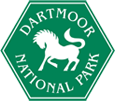Valley Mire
Valley mires are areas of water-logged deep peat in valley bottoms with characteristic acid wetland plant communities. They are not only found in valley bottoms but also natural basins and old tin workings where peat has accumulated. The valley mires on Dartmoor are of international importance and are of high quality with many rare plants.
The characteristic plant community includes cotton-grass, cross-leaved heath, bog asphodel, bog-bean, round-leaved sundew, pale butterwort, marsh St John’s-wort, moorland water crowfoot and bog pimpernel. Less common plants include the oblong-leaved sundew, marsh lousewort and bog-myrtle
The inconspicuous bog orchid which occurs in several valley mires on Dartmoor is threatened with extinction throughout its European range. The UK has between 25% and 50% of the world’s population. Irish lady’s tresses is an attractive but rare species which, in England, only occurs in one valley mire on Dartmoor and nowhere else in England. The great sundew was recently found in one Dartmoor site. These are the rarest plants found in mires.
Characteristic animals include snipe and curlew, common frog, golden-ringed dragonfly and black darter dragonfly. Teal breed occasionally. About 4 pairs of curlew and one pair of lapwing breed in this habitat on Dartmoor. Both species are declining.
Dartmoor Valley mires are of national importance for the keeled skimmer dragonfly. The small red damselfly and scarce-blue-tailed damselfly are found in a few sites and the globally threatened southern damselfly is found in a valley mire in the north east of the National Park.
Most of the valley mires are within SSSIs, many examples occur in the three biggest SSSIs – North Dartmoor, South Dartmoor and East Dartmoor. Blackslade Mire and Whitchurch Down are notified solely because of their outstanding mires.
Potential threats to this habitat include water abstraction, nutrient enrichment from agriculture, acidification from atmospheric deposition (acid rain) and disturbance of nesting curlew and lapwings by people and dogs.
